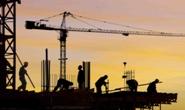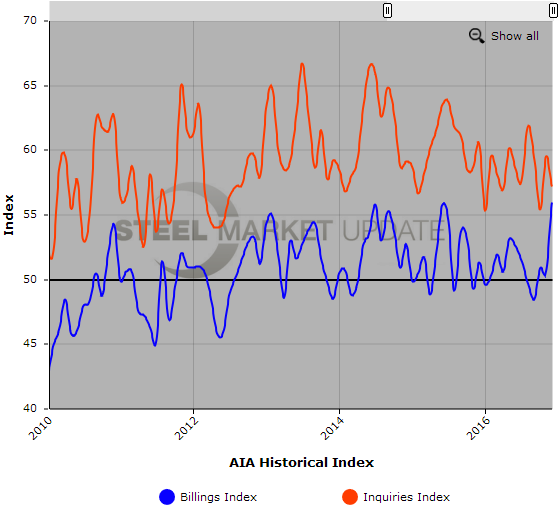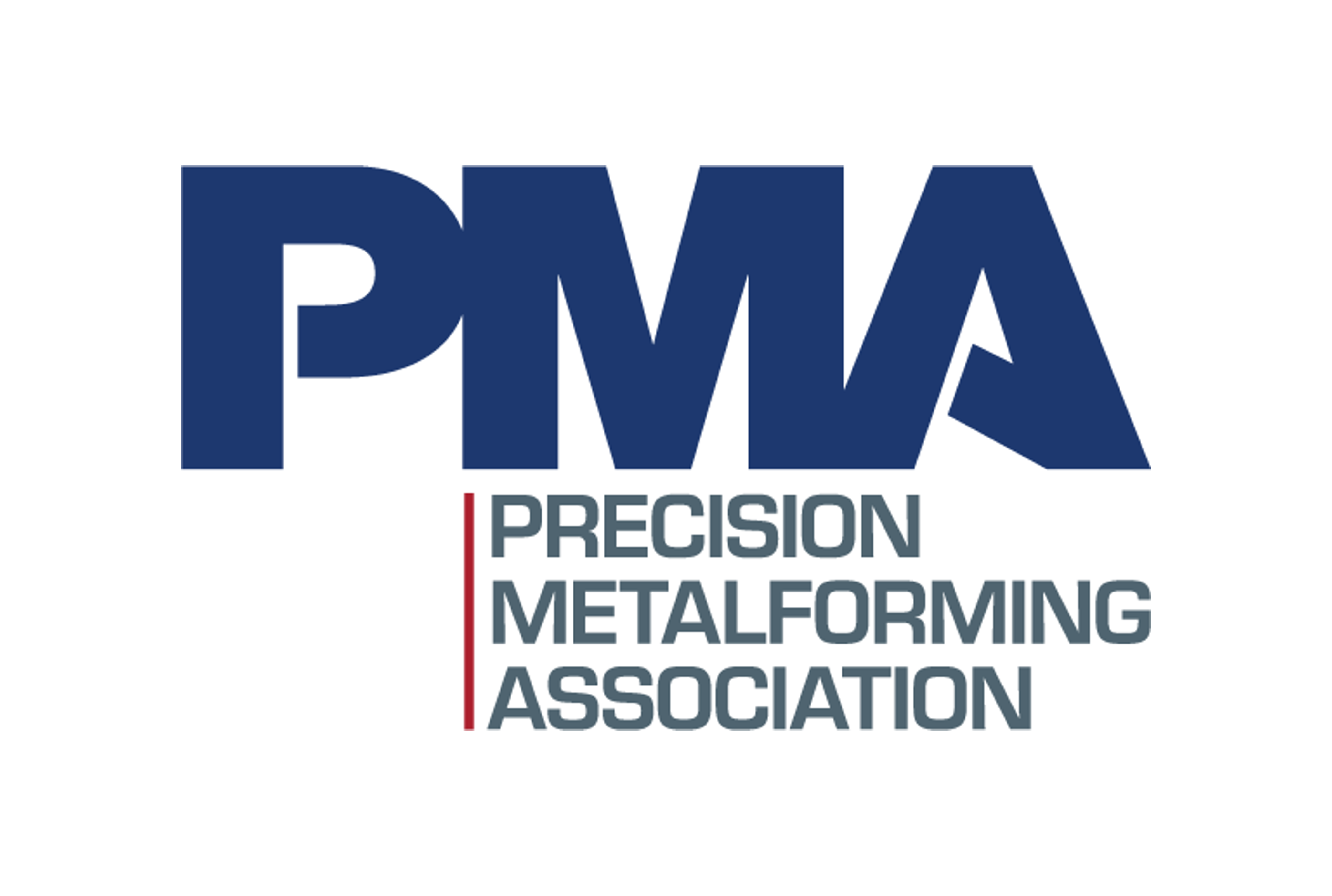Market Data

January 22, 2017
ABI Ends 2016 with a Third Month of Growth
Written by Sandy Williams
The Architecture Billings Index (ABI) ended 2016 at a score of 55.9, up from 50.6 in November and growing for the third consecutive month, according to the latest report by the American Institute of Architects.
The new projects inquiry index stood at 57.2 in December from 59.5 the previous month. The differing growth pace between the indexes was considered an indication that architecture firms will see more moderate growth for billings in 2017, said AIA.
Regional and Sector scores:
Regional averages: Midwest (54.4), Northeast (54.0), South (53.8), West (48.8)
Sector index breakdown: commercial / industrial (54.3), institutional (53.3), mixed practice (51.9), multi-family residential (50.6)
“The sharp upturn in design activity as we wind down the year is certainly encouraging. This bodes well for the design and construction sector as we enter the new year,” said AIA Chief Economist, Kermit Baker, Hon. AIA, PhD. “However, December is an atypical month for interpreting trends, so the coming months will tell us a lot more about conditions that the industry is likely to see in 2017.”
A recent survey by AIA of architecture firms show the top business concern is the “the ups and downs of business conditions in the industry.” The ups and downs make it difficult for firms to balance cost and revenues, said survey participants. The second biggest concern was “the high cost of running a firm, and the required investments.”
Participants in Works-On-Board survey, that the ABI index is derived from, said more small projects were becoming available to smaller firms as larger firms “become oversaturated with work.” Participants look forward to oil and gas stabilizing so that “projects that were put on hold during the downturn resurface.”
About the AIA Architecture Billings Index
The Architecture Billings Index (ABI), produced by the American Institute of Architects, is considered a leading economic indicator of construction activity, and reflects the approximate nine to twelve month lead time between architecture billings and construction spending. The regional and sector categories are calculated as a 3-month moving average, whereas the national index, design contracts and inquiries are monthly numbers. The monthly ABI index scores are centered around the neutral mark of 50, with scores above 50 indicating growth in billings and scores below 50 indicating a decline.
Below is a graph showing the history of the Architecture Billings Index and Inquiries Index. You will need to view the graph on our website to use its interactive features, you can do so by clicking here. If you need assistance logging into or navigating the website, please contact our office at 800-432-3475 or info@SteelMarketUpdate.com.








